This morning began with me indulging in another Type A, United Statesian fuss. Dario and I had agreed last night to explore the island together in his truck, and I knocked on his door a little after 8 to see if he was there. No answer — which didn’t surprise me, as he said he usually didn’t wake up until 9 (which probably meant 10).
I went into town, planning to check my email and buy some fruits and vegetables from the little farmers’ stands that set up next to the Cruz Verde pharmacy. I needed cash to buy food, so I went to a bank — my card was denied. Yikes. My mind immediately jumped to disaster. I wasn’t going to be able to get anymore cash while I was on the island? How would I buy my vegetables? So began the fuss. (And yes, even at the time I realized I was overreacting; I could still probably squeak by for a few days on my credit card. But still.) I emailed Dan and asked him to call my bank; I called my bank myself from my cellphone and was cut off after 10 minutes in transfer purgatory, wasting precious time on my international plan. I emailed my bank.
Finally, I had the brilliant thought of trying the other bank in town — which, of course, worked immediately. Looking back on this episode, I wonder how much of my anxiety was fueled by somehow picking up on echoes of the scarcity and deprivation that panicked the islanders all those years ago. Being so isolated out here, and on my own, I feel like I have nowhere to turn. The closest other island or continent is the width of the United States away. I started to understand how desperate you could feel here, alone in the middle of the ocean, the nearest civilization a months-long boat ride away.
Money situation in order, and giving up on Dario waking up anytime soon, I headed out of town to find the hiking trail to Orongo, the ceremonial staging ground for the Cult of the Birdman. This was the yearly ritual that arose after moai construction ceased, a much more visceral and fierce system reflecting the islanders’ changing mindset.
A lot is known about this ritual because a fascinating woman, Katherine Routledge, documented its details when she visited the island for a year and a half in 1914. (Routledge’s story, like so many others connected to Easter Island, is fascinating in itself: She and her husband had their own ship built to make the journey from England. After publishing a book about the island on her return — one I’m dying to read once I get home — she was eventually committed to a mental institution after a decades-long battle with schizophrenia.)
The Birdman cult was practiced from about 1650 or 1700 until about the 1860s, when Catholic missionaries put a stop to it. Basically, in September, each island tribe would designate a young male competitor who would have to climb down the sheer volcanic cliffs at the island’s south end, swim out to a tiny islet in the ocean, and then wait (sometimes weeks) for the sooty terns to arrive and lay their eggs. The first competitor to obtain an egg was the winner, and he swam back to Easter Island with the egg in a pouch. His tribe and his chief won special rights and respect from other tribes for the following year.
As I walked out of Hanga Roa, the first site I encountered was Ana Kai Tangata, a cave with vividly colored paintings related to the Birdman cult. A few have washed away in the last century, including one of a European ship, yet another reminder of how fragile the island’s remains are.
The trailhead to Orongo took some finding, but it basically starts just next to the island office of CONAF, Chile’s conservation agency. From there, clear markers point the way to the trail (sendero) to the top of Rano Kau, site of Orongo and another of the island’s extinct volcanoes.
Then followed about 45 minutes of uphill walking through mostly open grassland (not too hard, but definitely sweaty).
I came to the road that most people drive up to Orongo. (A moment of self-righteousness: I earned this, all you wimpy drivers! Haha.) Behind me were panoramic views of Hanga Roa.
And then I forgot my self-righteousness because there, on the other side of the road, was the stunning site of the lake inside the crater of Rano Kau, with the Pacific stretching beyond.
See that dip in the back of the crater’s rim? That’s there because of erosion from the sea. It has a name — Kari Kari — because it’s from there that the Birdman competitors would scramble down the vertical cliffs to begin their swim. Another thought of fragility: How long before the notch wears all the way down to the level of the lake, and the water drains into the sea?
Nerdy picture of me at the lake:
A few stray dogs must have sniffed the food I had on me, because they were following me faithfully. (See the photo about half a screen up.) This has been maybe the most sobering part of being here: Witnessing the desperation of the dogs. In Santiago, the street dogs are well taken care of. They don’t beg, and it’s easy to think of them as a charming part of the city’s life. But here, the dogs are desperate and hungry. They’ll follow you for miles if they get even the whiff of food on you. It’s pretty heartbreaking. Like yesterday, I wanted to tell them to go away, I need my food for myself. But of course they wouldn’t understand and I couldn’t blame them for trying. Better to hope than to give up.
It made me think: Life on the island is still rough and difficult to sustain in many ways, as evidenced by the high food prices and high general cost of living. And if it’s tough for humans, it’s really tough for dogs.
Another 15 minutes’ walking took me to the peak of Rano Kau and the site of Orongo. This is a small ceremonial village (occupied only during the festivities) of low stone houses. One of the most interesting moai ever found came from inside one of these houses: It was carved with images of the Birdman competition, perhaps appropriated for this use after the new rituals had begun. It’s now in the British Museum in London. In fact, this whole site was pilfered heavily by “explorers” (read: looters) in the 19th century, who also stole colorful frescoes and petroglyphs.
There were staggering views of the Birdman islet, called Motu Nui, the biggest of the three below, accompanied by two others. Motu Kao Kao, the spire closest to the main island, especially captured my imagination. It stands almost like a moai, facing and guarding its two larger siblings beyond.
There are 54 houses here, most of them restored by William Mulloy in the 1960s. They were made entirely of stone, unlike the thatch-roofed houses of villages closer to the sea, because the wind up here would have blown away the thatches.
This is last house, Mata Ngara’u, where the high priests of the Birdman ceremony lived. Like so many places on the island, it feels like the end of the world.
There are also some famous petroglyphs here relating to the ceremony, but you’re not allowed to get very close anymore.
I liked being here, and the setting was stunning, but it was nowhere near as evocative for me as Rano Raruku. The magnitude and scope of the activity are different, less cooperative than what happened at the quarry. I lingered for maybe two hours total, and then headed back down the volcano the same way I came. Along the way, I ran into a Japanese kid I’d seen flitting around shyly at the cave paintings. I struck up a conversation with him, and it turned out he didn’t really speak English or Spanish. At any rate, we walked back to town together, mostly in silence. I think I needed that little moment of company after thinking so many of my own thoughts. (Hardly any Americans here, by the way! All Chileans, Japanese and Europeans, mostly German.)
I returned to my cabin to rest and found Dario outside his house…
Preparing for a meeting with a lawyer. Apparently he’d gotten in “an accident” a few days before. (A lawyer for an accident? I suspected DUI but didn’t want to ask.) Half an hour later, he was back, and fuming about Chileans. They wanted to charge him a fine, and he had a court date tomorrow, and if he didn’t pay the fine he’d have his license suspended. “I told them I’m not going to pay you anything! You came and took my land, and my air…” This makes him sound like kind of a bad-ass, but he’s a really gentle guy. I suppose I should have been more upset by all this than I was, but by now I’ve kind of resigned myself to the fact that I’m staying at a place that’s run by a derelict but sweet guy. It’s become my new normal.
We decided we’d better squeeze in a little touring of the island while he still had the right to drive his car. I made sure he didn’t seem drunk, and he drove me to three sites, in declining order of importance and fame: Ahu Akivi, Puna Pau and Ahu Huri A Urenga. I have to say, it felt awfully relaxing to be driven around for a couple hours after all the walking and biking I’d been doing.
Ahu Akivi is the largest and most famous of the inland ahu. I’d been sort of thinking of it as the farmers’ ahu, because the villages on the interior of the island concentrated mostly on agriculture over fishing. There are seven moai here, restored, most with broken necks that have been mended with concrete. I happened to get here at peak tour-bus time, so I wasn’t inclined to stick around long. I watched as one German tourist from an enormous red bus went down the line of moai and snapped a portrait of each one. She never stopped looking through her viewfinder.
Next Dario drove me to Puna Pau. He didn’t want to hike up the steep hill to the site, so I went alone. This is the quarry where they made the red scoria topknots, or pukao, an late innovation in the moai period. It’s a kind of much-less-dramatic Rano Haruku, many finished or half-finished pukao strewn around a deeply incised quarry.
Here’s the quarry itself:
After a few minutes of silence, the Germans showed up, including profile snapper, and I retreated. This topknot is interesting because that slot in the middle was made by a shepherd for shelter, back when the island was practically owned by a sheep farming company in the early 20th century.
As we drove, we could see some limited farming beginning to happen on the island. This seems important for having access to better, fresher and cheaper food.
The final site for the afternoon was Ahu Huri A Urenga, a single restored moai on a stand not far outside the main town. It’s best known for its astrological alignment, facing the exact direction of sunrise at the winter solstice. It also has two sets of hands, perhaps because the carver wasn’t happy with the first set?
The two sets of hands:
When we got back home, a few of Dario’s cousins and his brother had come over and were preparing the fire pit to roast some beef. I made small talk with them for a while; the brother lived for a while in Colorado, working in construction, and then headed into town to watch the sunset at Tahai again (beautiful again, no dogs, and I stayed tonight until all the stars were out) and then call Dan via Skype. So strange, but good, to talk to him from the middle of the ocean.
I returned home and found a few more people had gathered, including a niece of Dario’s who’s a tour guide and works sometimes for Jo Anne van Tilburg, an American archaeologist who has been excavating some of the statues at Rano Raraku. (Van Tilburg also wrote a biography of Katherine Routledge that I want to read.) She offered to take me on the north coast walk tomorrow, and I was happy to have found a guide without having to make a bunch of phone calls.
I closed the day out with another trek to Tahai for sunset. The views were just as stunning tonight as last night, but I indulged in a no-photos policy and just let myself watch.

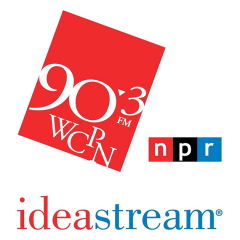
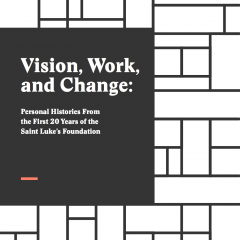
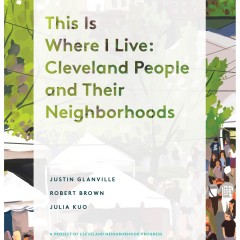
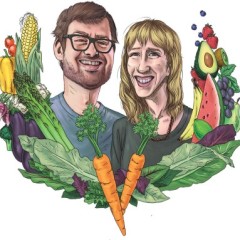
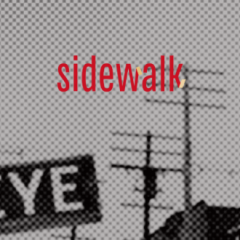



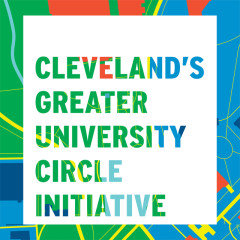
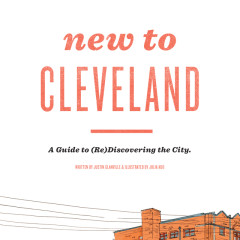

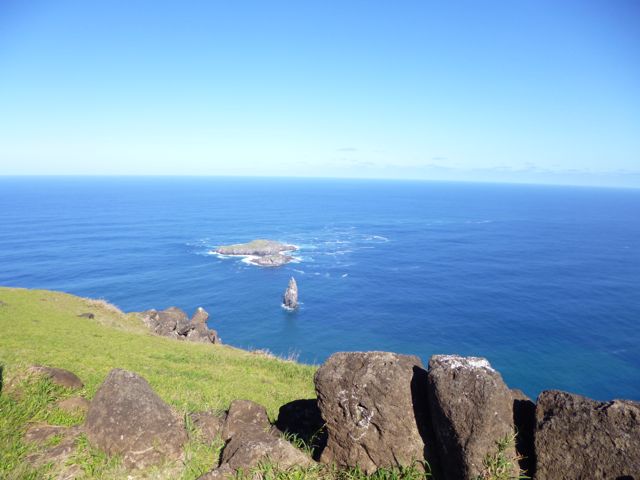

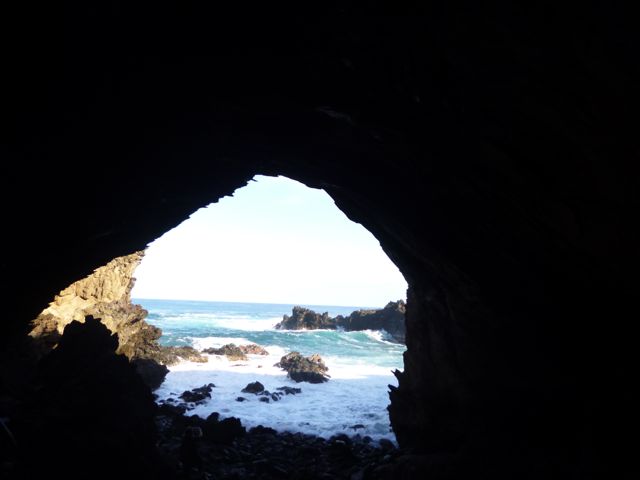
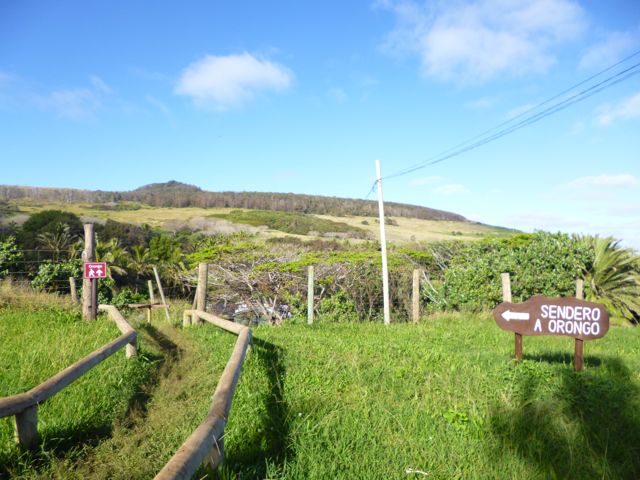

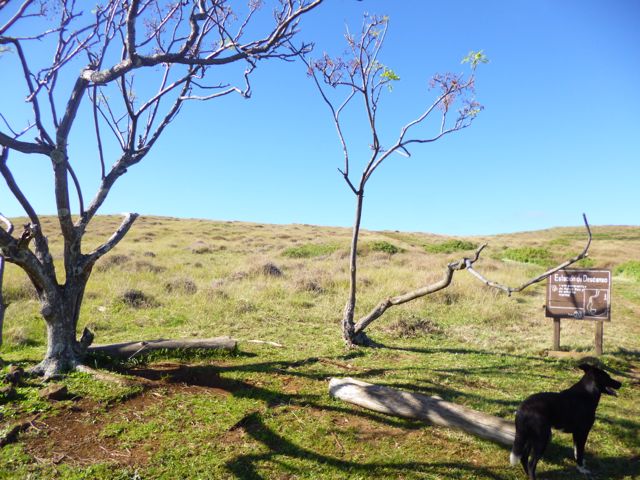
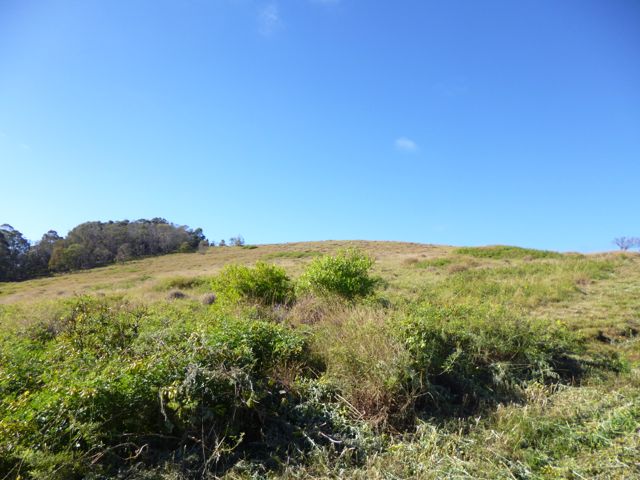
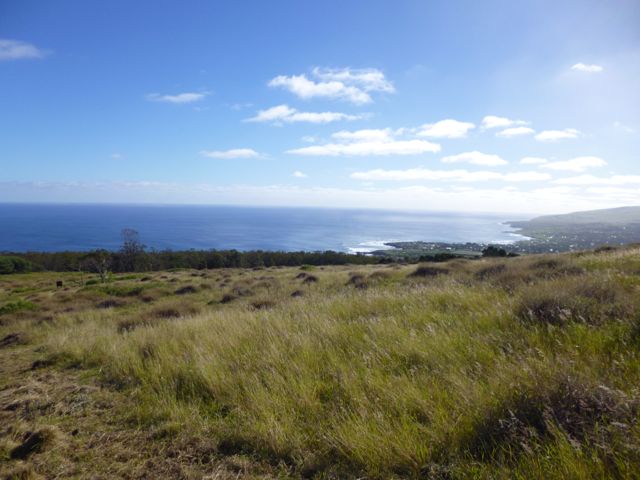
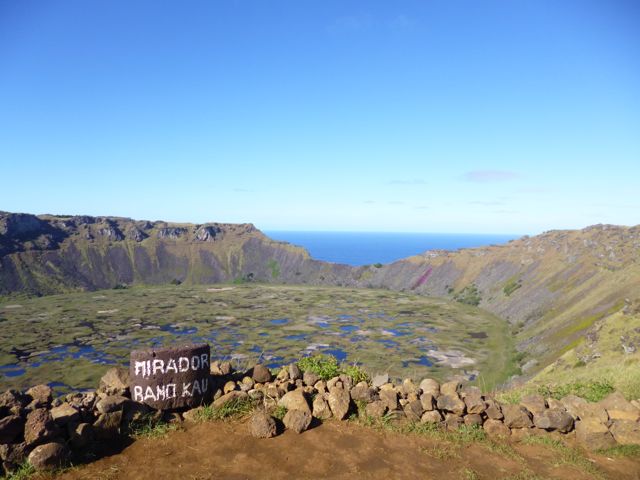


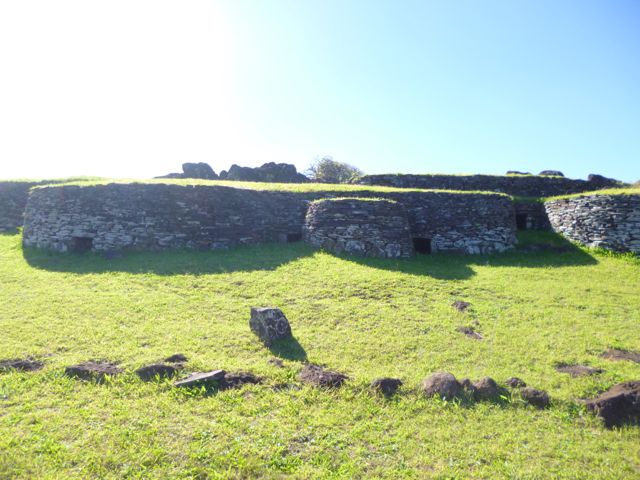


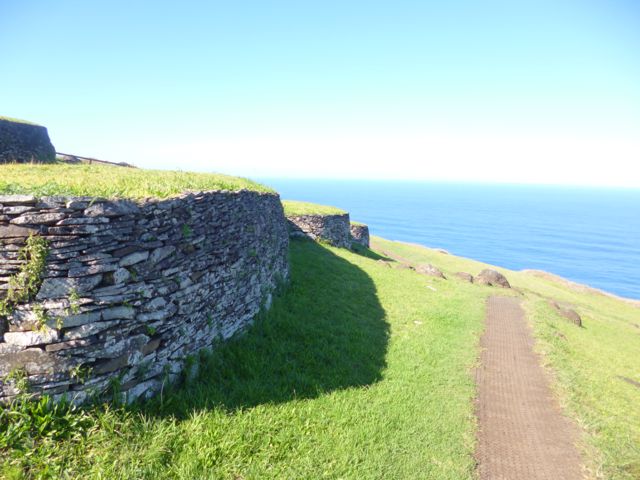
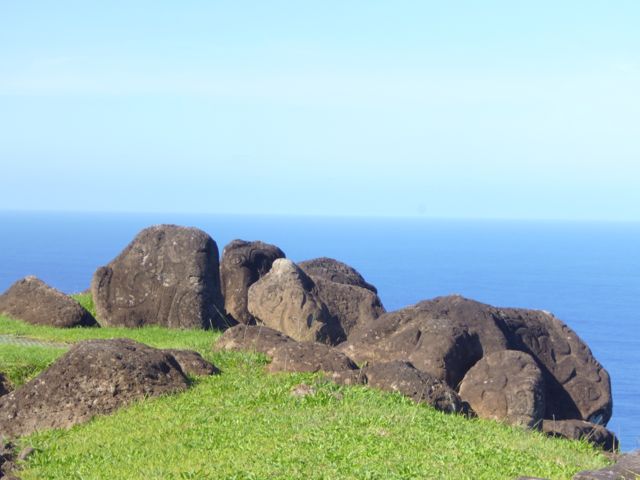

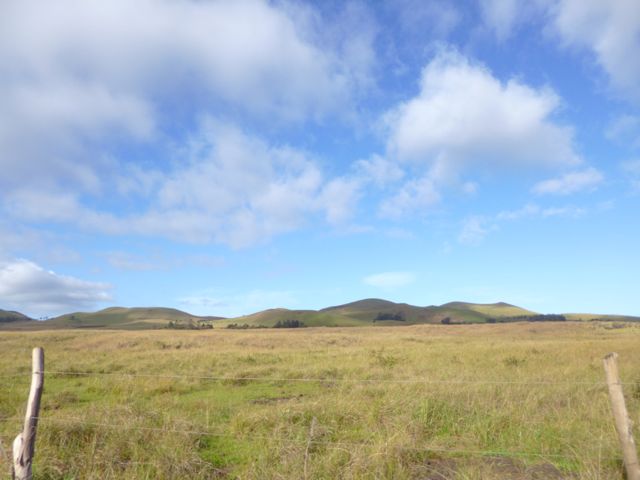
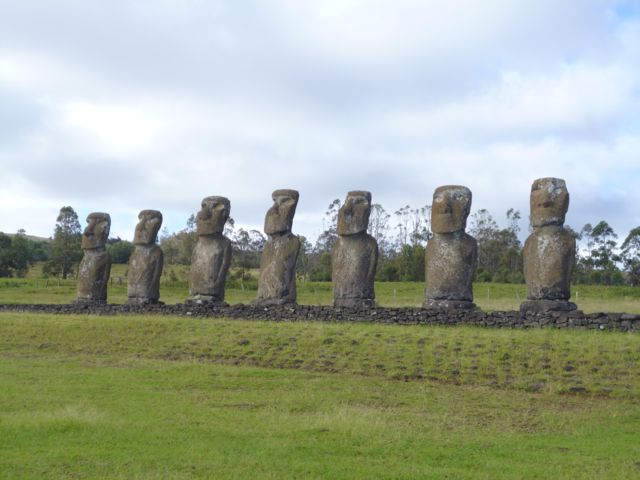
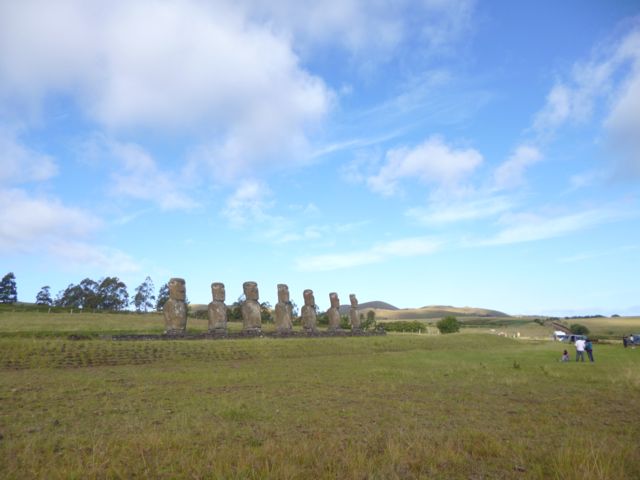
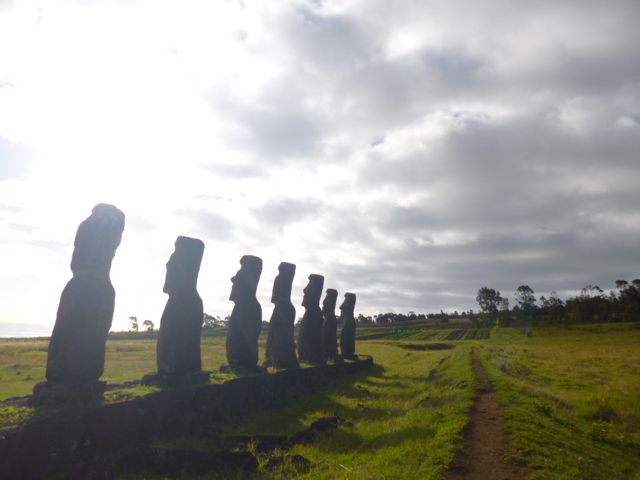
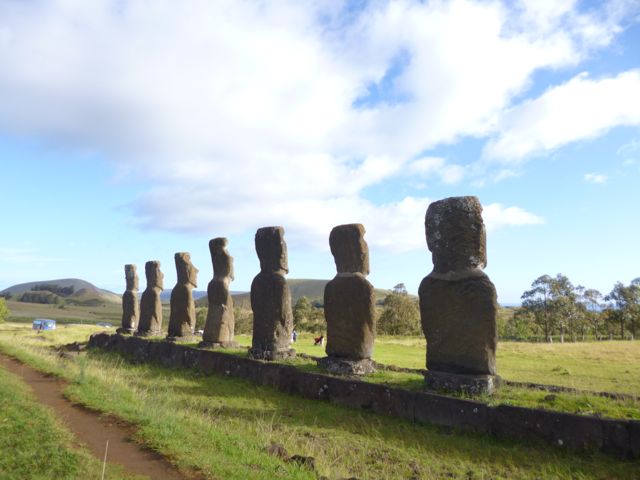
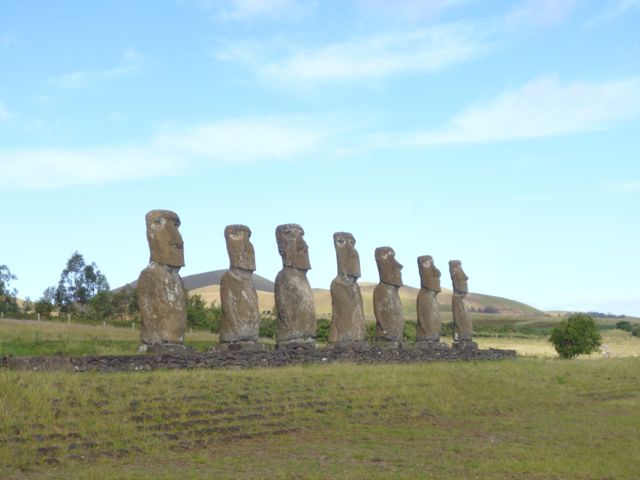
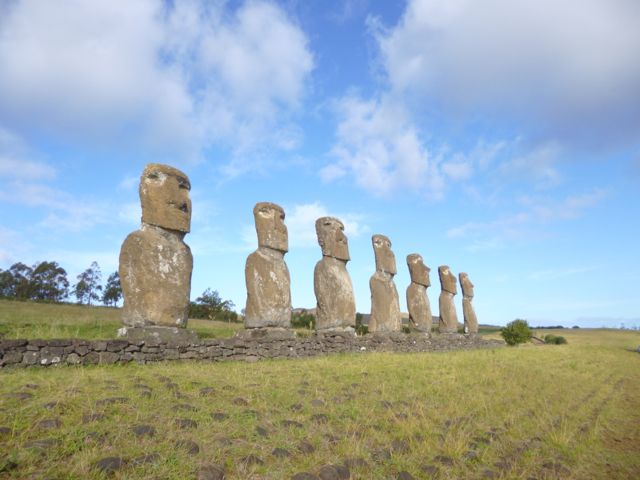


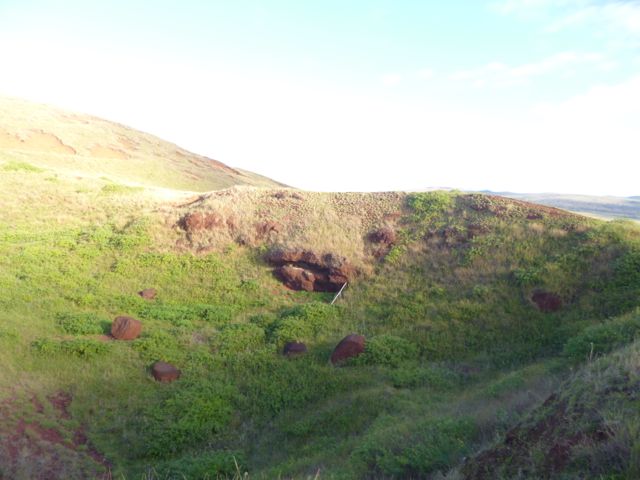


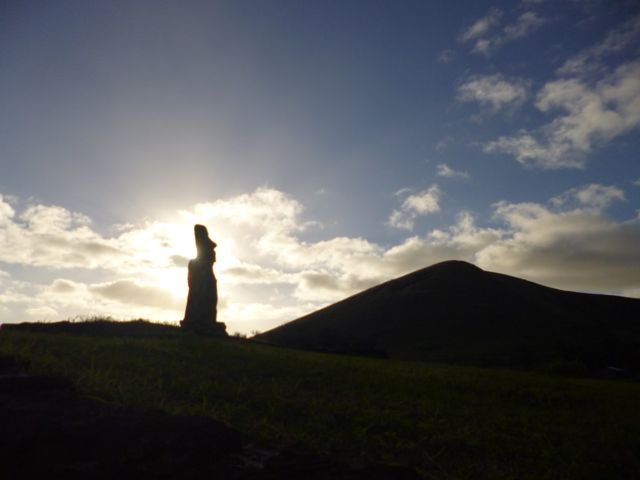
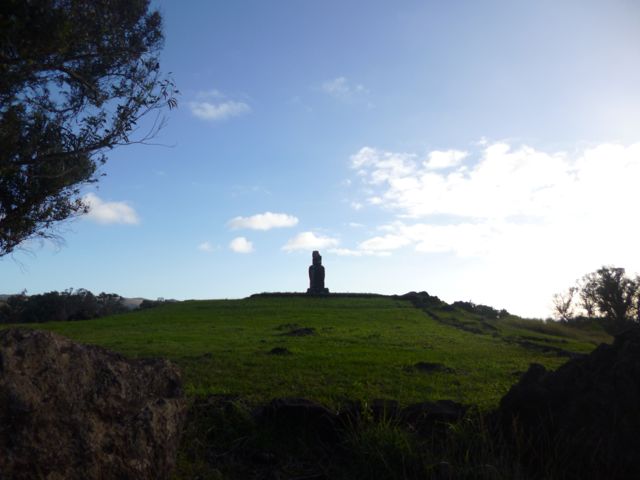
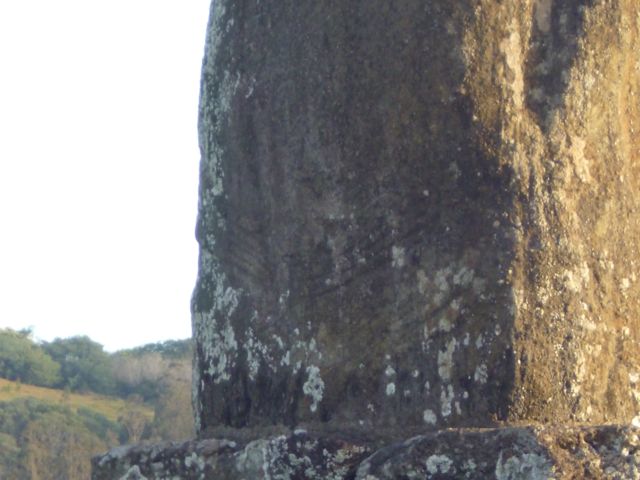
2 Comments